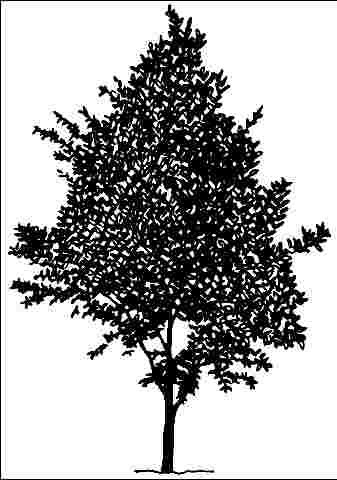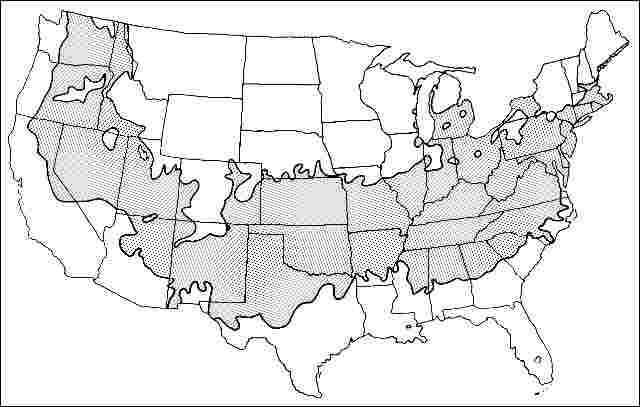Introduction
An excellent, small to medium-sized, deciduous garden tree, 30 to 40 feet tall and 25 to 30 feet wide, Japanese Stewartia is an all-season performer, exhibiting a distinctive branching pattern in winter, camellia-like flowers in summer, and bright yellow and red foliage in autumn. Most other trees have finished flowering by the time these flowers emerge. Once you have seen it, the fall color is unforgettable. The bark is spectacular, peeling off and exposing contrasting colors. It could be grown for this characteristic alone. The tree branches close to the ground forming a sinewy pattern not unlike crape myrtle. It would make a nice patio tree, could accent an entry way, or could be grown as a canopy tree over a sidewalk. A row of them on either side of a sidewalk spaced 15 feet apart makes an outstanding `covered walkway'. It could be planted as a slow-growing street tree beneath power lines due to its small stature.

General Information
Scientific name: Stewartia pseudocamellia
Pronunciation: stoo-AR-tee-uh soo-doe-kuh-MEEL-ee-uh
Common name(s): Japanese Stewartia
Family: Theaceae
USDA hardiness zones: 5B through 7B (Fig. 2)
Origin: not native to North America
Invasive potential: little invasive potential
Uses: street without sidewalk; deck or patio; specimen; container or planter; espalier; parking lot island < 100 sq ft; parking lot island 100-200 sq ft; parking lot island > 200 sq ft; sidewalk cutout (tree pit); tree lawn 3-4 feet wide; tree lawn 4-6 feet wide; tree lawn > 6 ft wide; highway median
Availability: not native to North America

Description
Height: 30 to 40 feet
Spread: 20 to 30 feet
Crown uniformity: symmetrical
Crown shape: oval, pyramidal
Crown density: dense
Growth rate: slow
Texture: medium
Foliage
Leaf arrangement: alternate (Fig. 3)
Leaf type: simple
Leaf margin: serrulate
Leaf shape: obovate, elliptic (oval)
Leaf venation: pinnate, brachidodrome
Leaf type and persistence: deciduous
Leaf blade length: 2 to 4 inches
Leaf color: green
Fall color: red, yellow, purple
Fall characteristic: showy
Flower
Flower color: white/cream/gray
Flower characteristics: showy
Fruit
Fruit shape: oval, round
Fruit length: 1 to 3 inches
Fruit covering: dry or hard
Fruit color: green
Fruit characteristics: does not attract wildlife; not showy; fruit/leaves not a litter problem
Trunk and Branches
Trunk/bark/branches: branches don't droop; very showy; can be trained to one trunk; thorns
Pruning requirement: little required
Breakage: resistant
Current year twig color: green
Current year twig thickness: thin
Wood specific gravity: unknown
Culture
Light requirement: full sun, partial sun or partial shade, shade tolerant
Soil tolerances: clay; sand; loam; acidic; occasionally wet; well-drained
Drought tolerance: high
Aerosol salt tolerance: unknown
Other
Roots: not a problem
Winter interest: yes
Outstanding tree: yes
Ozone sensitivity: unknown
Verticillium wilt susceptibility: unknown
Pest resistance: free of serious pests and diseases

Use and Management
Japanese Stewartia is a slow-grower, reportedly best in acid soil (pH 4.5 to 6.5) with ample moisture and high organic matter content. But trees are also found growing very well without irrigation in poor-quality, compacted clay soil. Some leaf-burn may be evident in drier summers in full sun but this does not appear to impact the tree permanently. Stewartia may prefer some shade in warm climates where it develops a more open habit but does quite well in full-day sun forming a dense, dark green head of foliage. Transplant as a small tree from a field nursery in early spring or from a container of any size at any time.
Propagation is by seeds or cuttings but is very difficult.
Pests and Diseases
No pests or diseases of major concern.